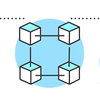Declarative vs. Imperative Programming Paradigms
When it comes to programming, there are two main paradigms: declarative and imperative. These two paradigms have different approaches to problem-solving and can be used to achieve different results. In this article, we will explore the difference between declarative and imperative programming paradigms, their advantages and disadvantages, and when to use each one.
Declarative Programming Paradigm
Declarative programming is a programming paradigm that focuses on describing what a program should do, rather than how to do it. In other words, declarative programming emphasizes the end result rather than the steps to achieve that result. This programming paradigm is often used for complex operations such as data analysis, machine learning, and artificial intelligence.
One of the main advantages of declarative programming is that it can be easier to understand and maintain. This is because the code is written in a way that closely resembles the problem domain, making it more intuitive to reason about. Additionally, declarative programming can be more concise and readable, as the code is structured around the problem's requirements rather than specific implementation details.
However, declarative programming can also have some disadvantages. One of the main challenges is that it can be difficult to optimize performance, as the code doesn't specify how the results should be computed. Additionally, declarative programming can require a deeper understanding of the underlying problem domain to write effective code.
Imperative Programming Paradigm
Imperative programming is a programming paradigm that focuses on describing how to achieve a specific result. In other words, imperative programming emphasizes the steps needed to achieve a specific outcome rather than the outcome itself. This programming paradigm is often used for low-level programming, such as system programming and device driver development.
One of the main advantages of imperative programming is that it allows for greater control over the program's execution. This is because the code explicitly defines the steps needed to achieve the desired outcome, making it easier to optimize performance. Additionally, imperative programming can be easier to learn for beginners, as it closely mirrors the way humans tend to think about problem-solving.
However, imperative programming can also have some disadvantages. One of the main challenges is that the code can become more complex and difficult to read as the program grows in size. Additionally, imperative programming can be more prone to errors, as the programmer must account for every possible scenario and edge case.
Which Paradigm to Use?
Choosing between declarative and imperative programming paradigms ultimately depends on the problem at hand. Declarative programming is often used for complex operations that require a deep understanding of the problem domain. In contrast, imperative programming is often used for low-level programming and situations where performance optimization is critical.
In conclusion, both declarative and imperative programming paradigms have their advantages and disadvantages. Choosing the right paradigm depends on the specific requirements of the problem at hand. As technology continues to evolve, it is likely that both paradigms will continue to play important roles in the development of new software applications.

When it comes to programming, there are two main paradigms: declarative and imperative. These two paradigms have different approaches to problem-solving and can be used to achieve different results. I
